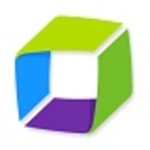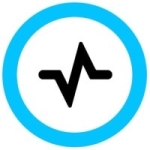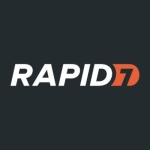What is our primary use case?
We utilize the LogRhythm solution to monitor most of our servers and our users to make sure that nothing anomalous is happening. What I really love about the LogRhythm platform is the fact that when something anomalous happens, I can see it almost immediately through the ability to collect a massive amount of logs in a very small footprint as far as hardware goes.
We do utilize everything. I think one of the most recent things that I've really enjoyed about LogRhythm is the ability to utilize smart responses published by LogRhythm. For example, one of our use cases is that when we have a termed users group, that when someone is placed in there, we want to monitor to see if their account is ever activated again. So we have a smart response set up that when a termed user is enabled, the smart response immediately activates and says bam, that user is getting disabled again. We don't want anyone to have access to that at all.
How has it helped my organization?
We've seen mean time to detect and to respond go down pretty significantly. We actually recently implemented the CloudAI solution, which allowed us to look into our users' anomalous behavior. Recently, we actually had some user who's a remote user, he traveled to somewhere else in the US, and CloudAI flagged it and was like, hey, this user is authenticating from somewhere new. This isn't somewhere we've seen before. I jumped right in, and I'm saying, "Hey, what's this user doing?" We emailed their manager who emailed them, and they said, "Oh, no, I'm just on vacation in California. It's okay." We had CloudAI learn about it, and now, it's really easy to see when a user does something anomalous.
CloudAI has been something in our environment that I have enjoyed immensely. It takes really a lot of the guesswork out of what our users are doing. Right when we implemented it, our CEO was actually out of the state, and we were having a hard time getting a lot of his user data because he was out of the state on vacation. When he came back, immediately CloudAI flagged him in the 80s with a threat score being from 0 to 100. Immediately, I was like, oh crap, our CEO's account has been compromised. But no, CloudAI was still learning our environment. It took it about a month or two to learn what was happening in our environment, what was going on, and then all of our threat scores, they kind of hover around the 20s now.
When something does something anomalous, when they work out-of-state, even when they authenticate to a different Microsoft server, it lets us know immediately what's going on, and it lets us know, and it lets us understand what our users are doing. CloudAI has definitely enhanced our security operations. It helps me understand what the users are doing almost instantaneously. It helps me understand what these users are doing in a daily report, and it helps me really feel why our users are doing certain things, why they're authenticating to certain servers. It helps me understand what their job would really want them to access or what their job has them access.
When they do something different from that, I really want to know why they're doing that. CloudAI helps me know what our users are doing. Rather than what hosts are doing or what servers are doing, it helps me know what the users are doing with their accounts. I think somewhere CloudAI would have room for improvement is maybe correlating hosts with IPs because often, I'll have a user, it'll come up with an anomaly score saying it's been authenticating from different hosts, but really what it is is it'll have the user's computer, then the user's IP that they're coming from, and sometimes their hostname with our domain name afterwards. Sometimes, CloudAI will usually be alerting us on some things that are really just the user's computer IP coming up multiple times.
What is most valuable?
LogRhythm has really improved, I think, my personal sense of security as far as our organization. I feel that I can trust the data that it's pulling in. Through its metrics, I can see when something isn't reporting so I know immediately if, maybe say one of our core servers isn't feeding its logs to us, I can remediate that almost immediately, and then feel secure again knowing that that data is coming to LogRhythm, and LogRhythm is correctly dealing with it. I can know that our security is in place.
We haven't used any of the LogRhythm built-in playbooks yet. Stability has been really good. The LogRhythm platform in our environment actually sat for three years with no one really using it. I came in about six months ago. I was able to pull it from generating about a thousand alarms a day that were just heartbeat errors, or critical components going down, to it actually only generating about 100 alarms a day, some of those being diagnostic alarms, but most of them being very helpful alarms that rarely ever point to having a component being down. With some short maintenance daily, LogRhythm has been a very stable platform.
What needs improvement?
I think condensing and consolidating what a user accesses over and over again and just having CloudAI understand that that's all of the user's, and you can consider it as one thing rather than multiple things, and alarming on it, and alerting me on it, having me have a mini heart attack every time it tells me that this user is authenticating from a new place.
What do I think about the scalability of the solution?
Scalability with the LogRhythm platform has been immensely easy. We went from about five system monitors to over 200 in a week. We implemented that through our system management thing, but rolling out 200 system monitors in a week was incredibly easy through the client console, which LogRhythm has documented immensely well.
How is customer service and technical support?
Tech support with LogRhythm has been great. I've only ever had one bad case out of about the 15 or 20 tickets I've put in. They usually immediately get back to me, and even if it's something outside of their scope, there always willing to help refer me to the person that I need to talk to, and my issue is always resolved within the week. LogRhythm's support for log sources is great. We have about 3,000 log sources right now that we're taking in. Most of that is coming into our main data collector, but anytime we've had any new log sources that we need to onboard, it's been pretty seamless, and we haven't seen any performance hit on our main box.
With our LogRhythm solution, we're processing anywhere from 800 to 1,500 messages per second. With the LogRhythm platform, we're processing anywhere from 800 to 1,500 messages per second, and we don't see a performance hit at all.
How was the initial setup?
We've had CloudAI implemented into our deployment for about three months so far, and out of that three months, we've only had one day of downtime. That was with a scheduled transfer from how they were hosting it before to where they're hosting it now. Stability and uptime has been 99% plus. It's been something that I can count on every day to come in and see this report and rely on it. We really haven't had the chance to scale CloudAI. We're a growing organization, but we're not ballooning, and we're not adding on new users. CloudAI is a great option to sync with AD to pull all your users and, and you can just set up the identities and run with it on day one. The reason why we went with CloudAI and decided that it was something we needed in our environment was because we had the log data for a lot of our servers, a lot of our hosts.
We had the authentication data from our domain controller on the users, but we really wanted to understand what the users were doing and why they were doing it. So we looked into other artificial intelligence programs that would do some of the similar things, but we realized that CloudAI would do what we wanted but then feed the data right back into the LogRhythm platform. With that, we were able to see what the users were doing along with what our servers were doing, what the hosts were doing, and we would have all that data correlated, and we could understand it in one big picture right in the web console.
The implementation of CloudAI was incredibly easy. We just ran a script, added a certificate, and all of the sudden, we were sending the data to them, and we had a report the next day. When we choose a vendor to work with, the number-one thing that we want to understand is that they understand the product. We aren't just going to go to a vendor and say, "Here's our money, please go learn about this product and then implement it in our environment," because I'll just implement it, I'll just learn about it myself and do it. But if I go to a vendor and learn that they know about this product, they've implemented something before, I'm going to go with them nine times out of 10 because they will do something that I can't do myself because I don't understand what's going on.
What other advice do I have?
If I had to rate LogRhythm and CloudAI out of 10, I think I'd give it an eight. There's still room for LogRhythm to improve, and they've laid out a pretty great roadmap for what they want to do in the future. I think if they continued to innovate and continue to implement the things that they've talked about, that they'll continue to grow in my eyes. There is some room for improvement, but overall, if you want a very solid platform with stability and scalability, LogRhythm is definitely the way to go.
Disclosure: PeerSpot contacted the reviewer to collect the review and to validate authenticity. The reviewer was referred by the vendor, but the review is not subject to editing or approval by the vendor.

















